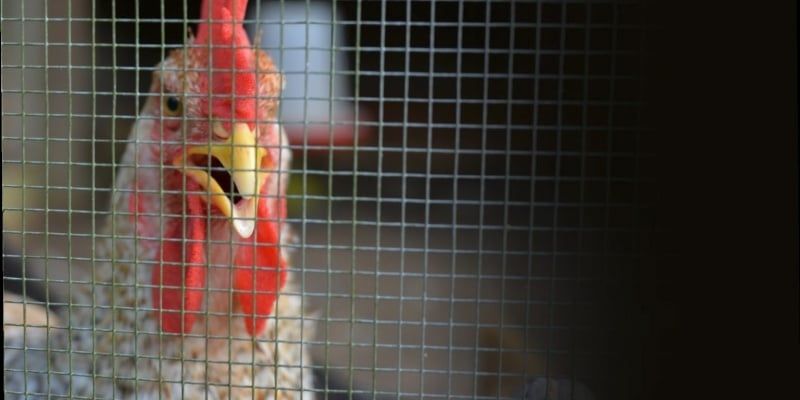Mini-Byte Topics


This is an article is designed a little differently from ones in issues past. We are going to share with you three mini-byte topics of specific interest to you the backyard poultry owner. Over the years, the Center for Small Flock Research and Innovation has done some interesting smaller or side projects. We would like to introduce these three interesting projects for so get ready to put your learning hat on!
CHICK Flic®& Ammonia
I know you are immediately thinking about sappy movies or movies just for your chickens…but, no, we are talking about something entirely different. CHICK Flic® is an odor eliminator that you spread onto the bedding in your coop. It traps ammonia that is being released from chicken feces. Sometimes when your coop bedding gets wet, either from rain or a waterer spill, you can start to smell ammonia. If you spread CHICK Flic® around the coop, it traps the ammonia that can be very harmful to your flock.
Most flock owners do not have any idea as to how harmful ammonia can be to the respiratory system of a chicken. If chickens are consistently exposed to ammonia it can lead to damage to the eyes as well as the respiratory system. High ammonia levels in the coop can lead to blindness in chickens and I have seen this happen when people have wet coops, use non-absorbent bedding (straw), and do not clean wet spots immediately. If you can smell it in the coop up at your height, then just imagine what it must smell like down where you chickens are living. If you smell it or your eyes water, then it is time to do something.
Ammonia levels that are greater than 30 parts per million (ppm) are considered unacceptable in commercial housing. Commercial poultry producers know how to take care of an ammonia problem and have steps in place to measure and then react to high ammonia levels. Their solution uses spray applicators and strong chemicals that require training. So why not have a solution for small flock owners will not require special handling and strong chemicals?
CHICK Flic® was designed specifically for the needs of small flock owners. It is a mixture of clay with acidic calcium sulfate. It is not a product designed for pH control as you can find with lyme or stall drying products. Rather this product directly handles the ammonia issue. That means that you will trap nitrogen in your litter. Composting your litter and then using the compost in your garden is still safe after using CHICK Flic®.
Personally, I have walked into small flock coops that have absolutely reeked of ammonia. I have literally had my breath taken away. In some cases people just got busy and were waiting for a free weekend to do a cleanout while in other cases people became injured or ill and had to wait to do their cleanout. High ammonia levels in your coop doesn’t mean that you do not love and cherish your chickens, but it may mean that you need a good solution rather quickly!
We tested this new product last year to see how effective it was in reducing ammonia levels in both summer and winter months. Two air samples were taken in each coop to obtain an average. To obtain measurements of the ammonia levels in the air, the RAE Systems Gas Detection Tubes for Ammonia were used. Air samples were taken before CHICK Flic® was spread on the litter as well as after. The coop was sampled again one week later to determine how long CHICK Flic® remained effective in the coop. Sampling was done in both the summer and winter as ventilation during those seasons are the most challenging for small flock owners and the ammonia levels experienced by the flock may be higher.
The effectiveness of CHICK Flic® in its ability to reduce ammonia levels in the coop was more prominent in the summer than in the winter season. However, regardless of season the levels of ammonia detected in the coop after treating the bedding with CHICK Flic® was on average 12-13 ppm which is well below the levels at which birds begin to experience deleterious effects from ammonia. The level of ammonia in the coop after the litter was treated with CHICK Flic® was the same regardless of the season.
Farms were sampled again 1 week later to determine how effective CHICK Flic® was in keeping ammonia levels at a reduced level. CHICK Flic® was not as effective in the summer as in the winter in keeping ammonia levels down. This is to be expected as the humidity during the summer can also affect litter moisture thereby causing more ammonia production.
On average, CHICK Flic® kept ammonia levels 10 ppm lower than the previous week during the winter months and 30 ppm (excluding 2 extreme cases) during the summer months. This means that CHICK Flic® in the summer could be applied and give small flock owners a week of extra time before needing to complete a litter cleanout. In the winter, it would perhaps give small flock owners at least 2 weeks of extra time before needing to complete a litter cleanout.
This new product is out on the market and has thoroughly impressed me. It is safe and easy to spread and handle. Farmers, once they saw it used on their farms, immediately wanted to know how to get their hands on it. It can be found at www.chickfliccoop.com.
BriteTap® vs. Open Trough Waterers
This study may seem far too obvious for many of you, but sometimes the research bears noting. We all know that the cheap waterers that are at all the feed stores are open to whatever may fall in them. That includes feces, dirt, dust, bedding, feed, or whatever else may come to visit your waterer in the middle of the night. That may include rodents, or their feces, in some instances.
It has been proven time and again that a closed water system, one that uses nipples like the BriteTap® Waterer, is much cleaner. During one of our research trials at Delaware State University, we had four pens with open waterers and four pens that used BriteTap® Waterers. The chickens were given these types of waterers after they were a week old until they were 6 weeks old. The chickens always had access to both food and water. The BriteTap has the added bonus of being easily cleanable. Two plugs pop out of the sides when you want to do a cleaning and you can scrub inside the unit. A brush and cleaning solution can be purchased separately (www.chickenwaterer.com). We measured how much water was consumed and also, once a week, we took samples of the water to see what bacteria grew (coliforms and total aerobic bacteria) and in what numbers. As it turned out, the type of waterer used did not affect the amount of water that was consumed so chickens drank as much water from the BriteTap® as they would from an open water trough.
During the first week of the study there was a significant difference in the amount of coliforms that grew in open water troughs versus the BriteTap®. This indicates that the closed water system of the BriteTap® was much cleaner. Coliforms tend to be organisms that grow in animals and in animal housing environments as well as in other systems.
The recovery of total aerobic bacteria, bacteria that grows readily in chicken coop environments and in the intestinal tracts of chickens and humans, was higher for open water troughs than for the BriteTap® Waterer. Regardless of the system used, however, the number of bacteria increased as time went on. This research proves that need for good cleaning measures for your chicken waterers at all times so you can knock back bacteria growth.
LuvNest™ & Eggs
Folks have been talking about giving herbs, both fresh and dried, to their chickens for years. Now there is a cool new product out there that has done all the hard work of picking and drying the herbs for you. And most of their products are USDA Certified Organic too! LuvNest™ is designed to be sprinkled in the nest box or in the litter (www.talmagefarm.com). They have 13 different herbs in the mixtures and their nibbles also includes freeze-dried mealworms for the chickens to eat as a snack.
The creators of LuvNest™ wanted to know if their product affected eggs in any way so we undertook a study to find out. We found four Delaware flock owners who had given their chickens herbs, or other garden items, sometimes alone or in combination. They stopped giving herbs and we collected eggs from them to get a baseline on different egg factors. We measured whole egg weight, yolk weight, albumen weight, shell weight, shell thickness, Roche Score of the yolk, Haugh Unit of the albumen, foam stability, angel food cake volume, and mayonnaise.
We then asked the owners to give the chickens LuvNest™ Layer Blend in a feeder in the coop. We also measured how much LuvNest™ that the chickens ate over time. Regular food and water were available to the flock at all times. The smell of the product made everyone in the project smile and it was a pleasure to keep in my office for a while!
The chickens readily consumed the LuvNest™ product. Eggs were not negatively affected in any way by the addition of LuvNest™ to the coop as a supplement. There were very few changes to the eggs. The volume of the angel food cakes did increase in the first week after feeding the LuvNest™, but it returned to normal for the rest of the trial.
The Roche color score of the yolks decreased as the summer progressed. That means that the yolks became lighter, but only by about 1 shade of yellow. Most flock owners do not notice a change that is this small. This may be due to the chickens eating less due to the heat. The summers in Delaware can turn very hot as they did over the course of the trial. When a chicken consumes less of their diet, or less plant material that contains xanthophyll pigments, then the yellow or orange color of the yolk becomes lighter. Although we recorded how much of the LuvNest™ we put out into coop, we did not verify if it was actually being consumed by the flock. Owners, however, did note that the chickens did like the product simply based on observations.
The shell thickness of the chickens changed over the course of the summer as well. The shells became thinner. The flocks that were used were all at least 2-3 years of age and so a decrease in shell thickness is not surprising. Older hens take the same amount of shell and try to spread it over a larger egg, therefore making the shells thinner. Young hens tend to have smaller eggs, but thicker shells.
These small tidbits of information are meant to be educational for you on behalf of your flock. You may choose to make changes to how you run things in your coop based on these results. Remember, your critical analysis of all that you do on behalf of your flock is what your chickens depend on to remain happy and healthy.
Tags:Plain Talk

Chicken Whisperer is part of the Catalyst Communications Network publication family.












